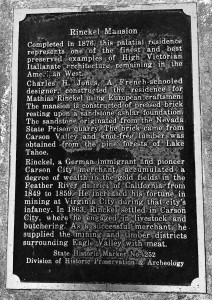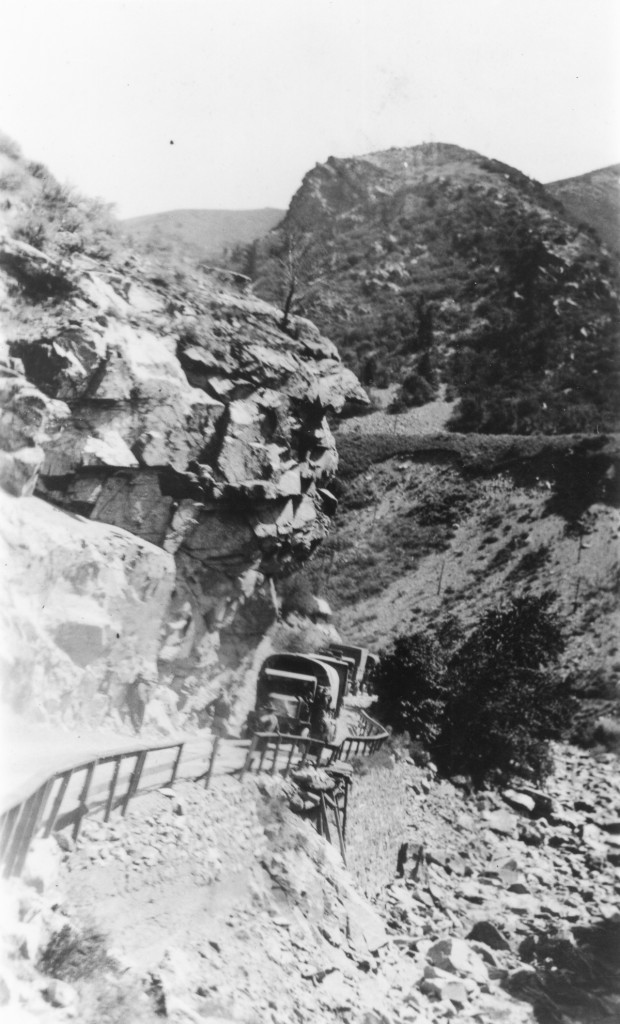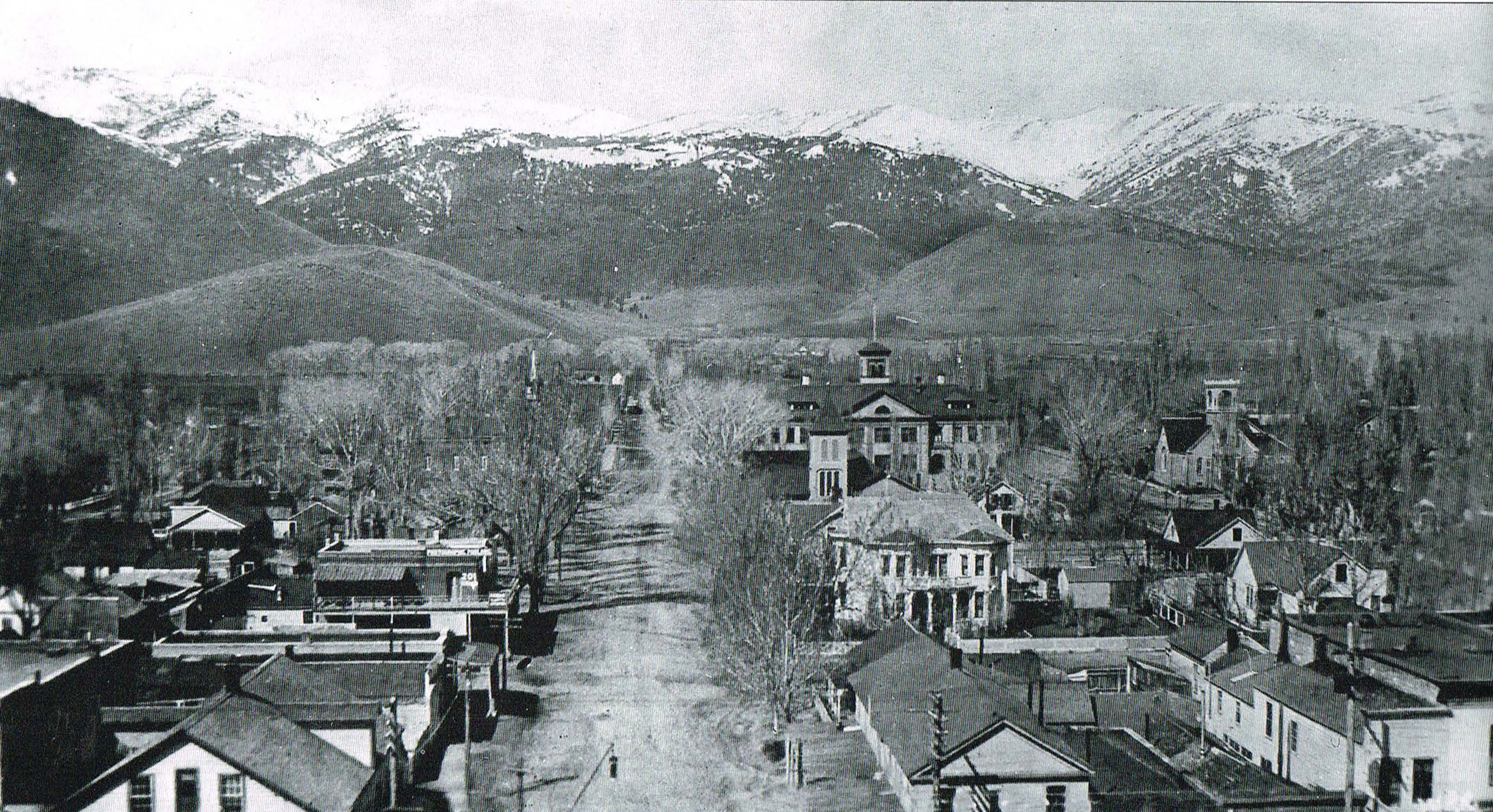
The Yesco sign company erected a new historical marker on Wednesday at the Rinckel Mansion, home of the Reynolds Press Center and NPA.
The marker is the work of the State Historic Preservation Office, which has been on a mission since the Nevada sesquicentennial to update markers across the state.

The old bronze plaque is still in place on a concrete pedestal facing Curry Street. It has served well over the years but will be removed at some point in favor of the new one.
The old marker did have a drawback, because it sits between the sidewalk and the street. People walking along the sidewalk seldom noticed it. If they did, they had to stand in the street to read it.
We decided the new blue marker should face King Street because it is prominent and might obstruct people when they’re trying to take photos of the mansion from the front, which faces west.
By coincidence, I was just reading this morning about the Lincoln Highway and Dwight D. Eisenhower’s arduous trip with a military caravan in 1919 that helped persuade him of the need for a transcontinental highway system when he became president.

This excerpt, particularly:
This, though, was nothing compared to Utah. Out on the Salt Lake Deserts, the heavy trucks could barely pass through the tracks of sand and crystallized alkali. “From Orr’s Ranch, Utah, to Carson City, Nevada, the road is one succession of dust, ruts, pits and holes,” wrote Eisenhower. At points, the convoy was 20 miles from any source of water—and 90 miles from the nearest railroad. On August 21, the first day on the stretch that Eisenhower described, ten miles from their starting point, the convoy had to remove a sand drift: that took a whole hour. But that was the easy part of the day. Soon, the convoy had to leave its planned path, to detour around an impassable cut-off, and by 2 p.m., almost every vehicle they had was stuck in the sand. Getting them out “required almost superhuman efforts of entire personnel from 2 p.m. until after midnight,” the daily log reported. That day, the group went 15 miles—in seven and a half hours.
The Rinckel Mansion was standing here, alongside the Lincoln Highway (King Street) when the caravan passed through en route to San Francisco.
If the military thought it had trouble getting to Carson City, think about the journeys that Mathias Rinckel and, later, his bride-to-be made to get here. She and her sister took a boat from New York, hiked across Panama, then sailed on to San Francisco before arriving in Carson City from the west.

 Nevada Press Association The best in Nevada journalism since 1924
Nevada Press Association The best in Nevada journalism since 1924